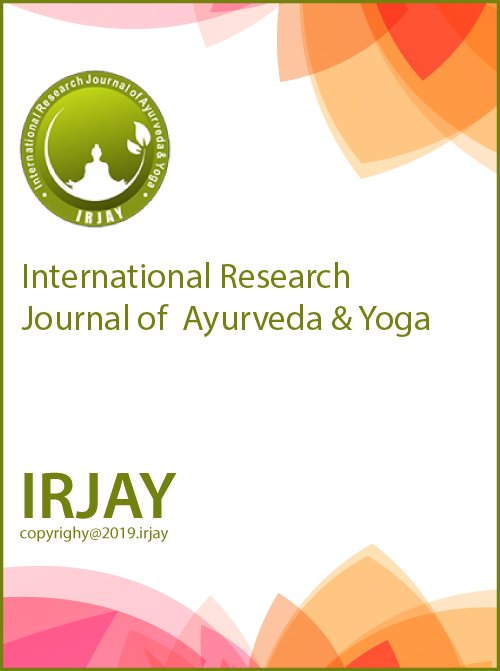Benefits of yoga and yoga along with the consumption of medicinal herbs among stakeholders during COVID-19
DOI:
https://doi.org/10.48165/IRJAY.2024.71203Keywords:
Migraine, Ben efits, Boost, Health Intact, DecoctionAbstract
Yoga, a discipline that aims to unite the mind and body to improve mental and physical wellness, comes from the Sanskrit word “yuj,” which means unification. Known for its ability to lower stress and improve well-being, yoga experienced a renaissance during the COVID-19 pandemic as people looked to it to help them cope with stress, worry, and loneliness. The purpose of this study, which was carried out in Kanpur Nagar in 2021–2022, was to evaluate the advantages of yoga in conjunction with medicinal herbs during the pandemic. The survey involved 120 individuals from four different localities. The results showed that yoga offered many advantages, such as less stress, better posture, increased immunity, better mental health, weight control, and headache relief. It was also observed that the use of medicinal plants, especially cardamom, turmeric, and tulsi, improved immunity and helped with weight management. Given yoga’s longstanding reputation for fostering both physical and mental well-being, the majority of respondents favored yoga alone, even despite the advantages of mixing it with herbs. In addition to highlighting the possibility of integrating yoga with medicinal plants for improved therapeutic outcomes, this study underscores the significance of yoga as a flexible tool for maintaining health, particularly during times of crisis. The usefulness of such integrative techniques in public health requires more investigation.
Downloads
References
Atkinson NL, Permuth-Levine R. Benefits, barriers, and cues to action of yoga practice: A focus group approach. Am J Health Behav. 2009;33(9):3-14.
Bentur SA, Mishra A, Kumar Y, Thakral S, Garg R. Integrative therapy based on yoga, Ayurveda, and modern Western medicine for treatment of high-risk cases of COVID-19: A telemedicine-based case series. IJRA. 2012;63(4):67-74.
Graham CW, Dela Cruz CS, Cao B, Pasnick S, Jamil S. Novel Wuhan (2019-NCoV) coronavirus. Am J Respir Crit Care Med. 2020;201(4):7-8.
Islam BMR, Sinha RK, Nyeem MAB, Nowrose M, Manna MDA. Socio-demographic factors and pattern of disease among the patients attending Unani and Ayurveda medical college hospital Dhaka. Int J Adv Educ Res. 2018;3(2):42-47.
Khalsa SBS. Yoga for psychiatry and mental health: An ancient practice with modern relevance. Indian J Psychiatry. 2013;55(8):334-336.
Kochhar KP, Oberoi AK, Hazra S, Lal PR. The role of traditional diet and yoga for infertility: A blend and balance of traditional knowledge and modern medicine. JAIMS. 2014;78(8):67-72.
Laster J. Yoga for psychiatry and mental health: The heart of Patanjali. Yoga J. 1997;8(7):134-144.
Gautam PK, Kumar S. Analysis of livelihood diversification among households in Bundelkhand Region. Indian Res J Ext Edu. 2007;22(4):1-6.
Rao NP, Varambally S, Gangadhar BN. Yoga school of thought and psychiatry: Therapeutic potential. Indian J Psychiatry. 2013;55(8):145-149.
Wang D, Hagins M. Perceived benefits of yoga among urban school students: A qualitative analysis. Evid Based

